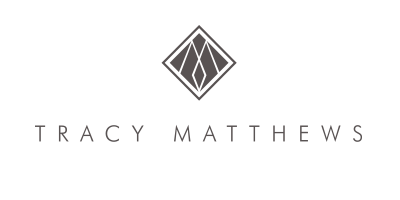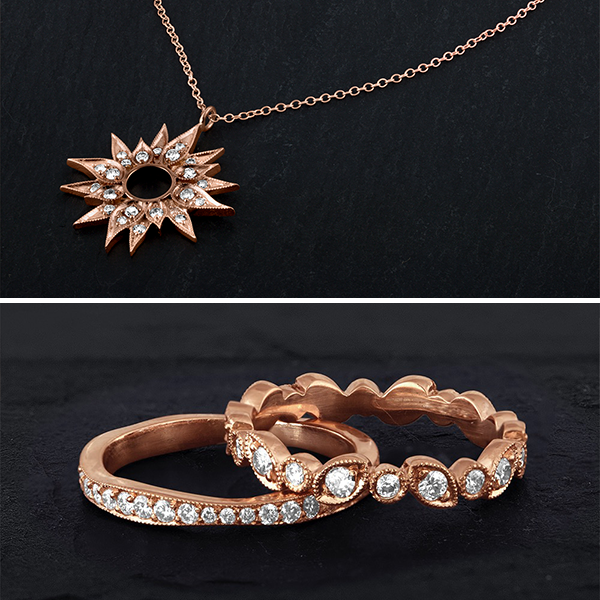Inherited Jewelry 101: Tips for what to do with inherited jewelry (when you don’t like it)
If you’re wondering what to do with inherited jewelry or other pieces of jewelry that are considered family heirlooms, I’ve got a treat for you today.
It’s always a bittersweet scene: a loved one passes away, parents get divorced or your mom is just trying to unload all of the jewelry she doesn’t like anymore from the 80’s and you just don’t know what to do with it!
Trust me! I get you because I’ve helped so many people figure out what to do with jewelry that they’ve inherited over the years.
A client came to me the other day with a few pieces of jewelry she inherited from her mother.
Lisa’s mother had recently passed away from cervical cancer and even though she didn’t necessarily love the rings she inherited, she wanted to design a new piece of jewelry with the heirloom diamonds that were set in the rings.
But she didn’t know where to start.
Then she found me and we designed an amazing ring for her.
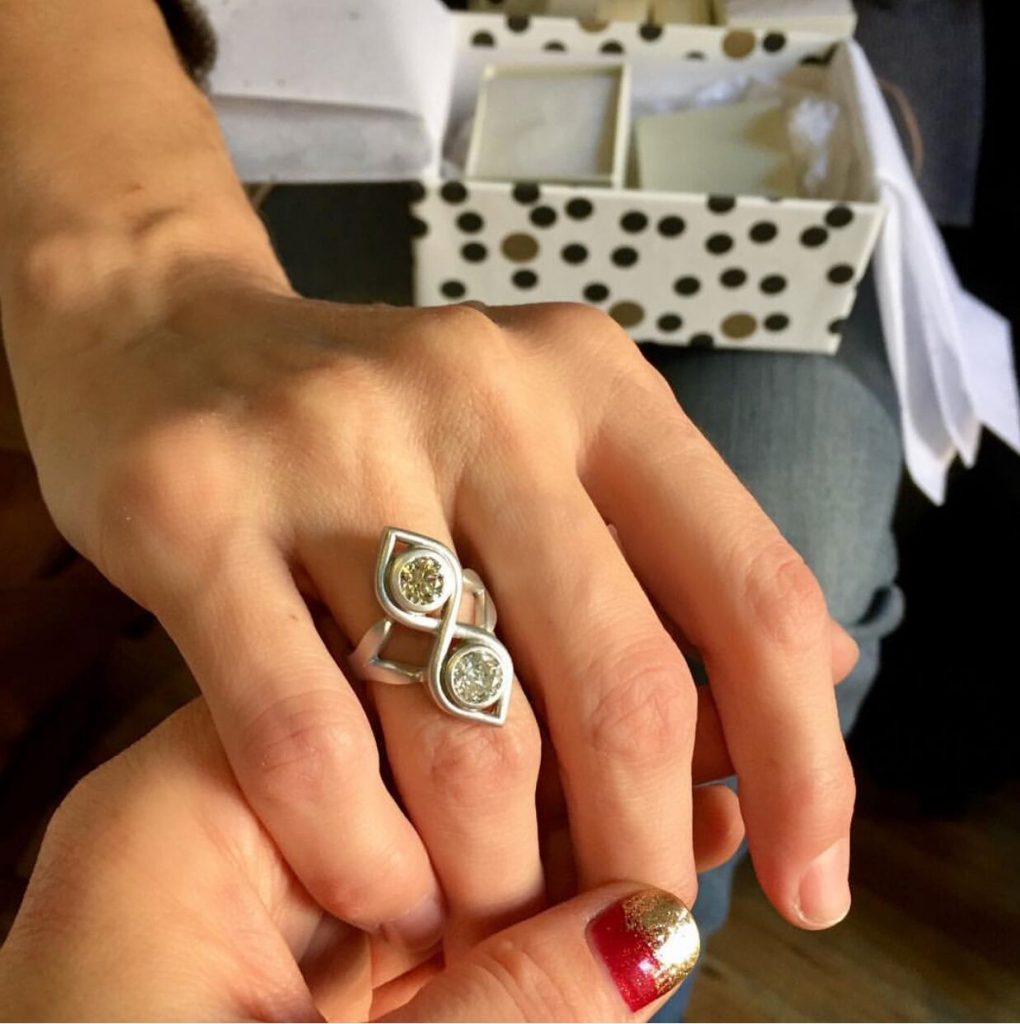
Over the past 10 years, I’ve been helping my clients figure out “what to do with jewelry that they inherited” especially if they don’t like the pieces their grandmother or mother chose back in the day.
As a New York City and San Francisco based heirloom jewelry re-designer, I love helping clients figure out what to do with jewelry that they inherited but don’t quite “love” the way it is.
Sure redesigning is an option, but you have more so here we go.
Here are a few tips on what to do with inherited jewelry (especially when it’s not your style):
1) Redesign the heirloom jewelry using the gemstones or gold (or both)
My client, Amy, came to me to design for her (the first time) because she read an article about my heirloom redesign process in a travel magazine centered on NYC.
She came to me with her grandmother’s engagement ring and her parent’s marriage band and didn’t know what to do with it.
The pieces were set in platinum and white gold, but Amy loves rose gold jewelry. She wore her grandmother’s ring but didn’t love the band with it and wasn’t sure if she should sell the pieces or make something new with them.
So we decided to take a two-fold approach.
Her grandmother’s ring was lovely, it just needed some love. My team resized and repaired the original setting.
For the marriage band, I removed all of the diamonds and traded in (refined) the gold for her. Since Amy loves rose gold, we took an old fashioned white gold setting and used those diamonds to make rose gold stacking rings.
(We had a few diamonds leftover that we made a sun style pendant with a few years later).
She wears her family heirlooms now everyday instead of keeping the pieces in her jewelry box.
2) Make tweaks or adjustments to the original heirloom design
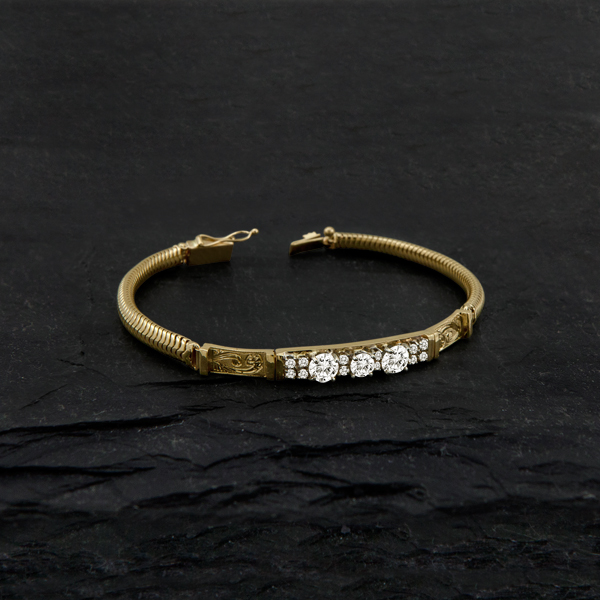
Sometimes, you kinda like the design of the jewelry you inherited but you don’t love it exactly the way it is. And other times the piece of jewelry just doesn’t really fit right.
In this case, you can modify the design in a way to improve the aesthetic and/or the fit so you can actually wear a piece of inherited jewelry that you love.
That’s how I helped Jamie and Jeff.
Jamie was really close to her grandmother but didn’t totally love the 80’s bracelet with diamonds that she inherited after her she passed away. Plus, the bracelet was a little small.
So instead of reinventing the wheel, we decided to do something a little different and add two panels of engraved gold to the bracelet to make the size slightly larger so Jamie could wear it.
Jamie is tiny but her grandmother was even tinier.
3) Sell it to an antique or vintage store or a jewelry reseller
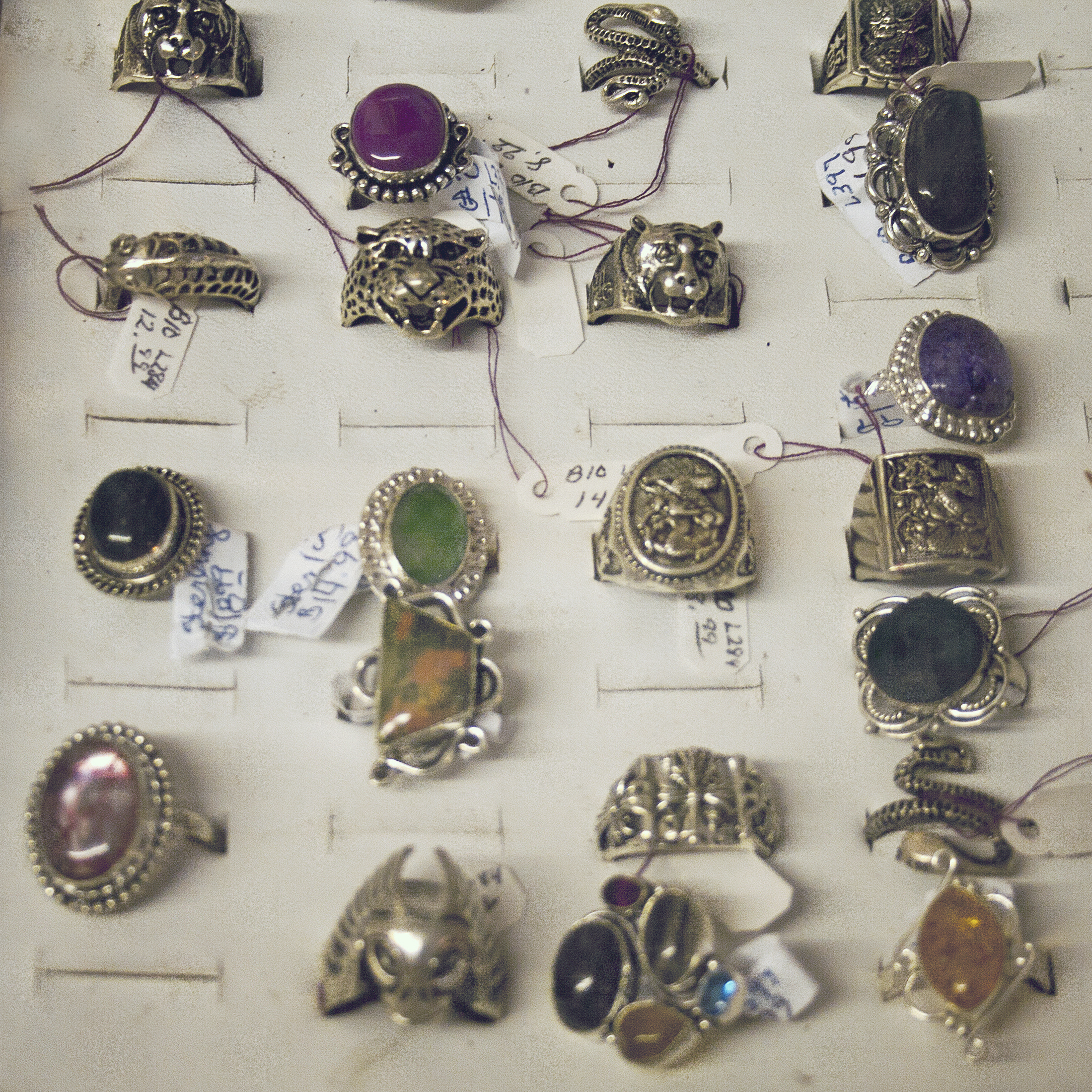
My next option for what to do with inherited jewelry is if you really don’t love the piece of jewelry, and for one reason or another you want to just sell it, you can definitely do that.
Typically you’d research an antique or vintage store or a jewelry reseller who specializes in selling previously owned jewelry.
Typically, you’ll have two options:
- Sell the piece flat to the store based on the offer they give. The upside is you gettypes of paid immediately. The downside: the store takes the is risk to actually sell the piece of jewelry so they will likely offer you a lower price so they can make a retail margin.
- Most resellers will also allow you to place a piece on consignment. The benefit to selling on consignment is that you’ll get a higher price or revenue split that if you sold it flat out. The downside is you’ll have to wait until the piece sells to get paid.
Do your research and get a recommendation from a trusted advisor or friend. Shop the pieces around.
Also, manage your expectations. Unless, your piece of jewelry is particularly rare or unique, you typically won’t get a full appraised or retail value for your heirloom inherited jewelry.
4) List your heirloom jewelry on a market place
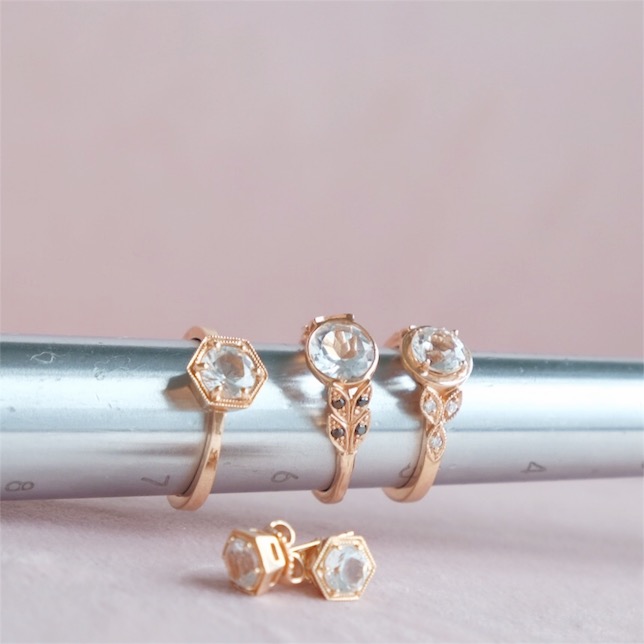
Everything is online these days it seems. Even virtually meeting your favorite custom and private commissioned jewelry designer here in NYC 😉.
(Yes, I’m here to help-LOL).
There are several marketplaces that specialize in helping you resell your jewelry. Places like 1stDibs, Ebay and a variety of reselling platforms are a great way to DIY the sales.
You might also consider working with an auction house or an agent who specializes in connecting owners of estate jewelry with buyers (especially if the pieces are valuable).
Beware though if you use a platform like EBay. You could put yourself at risk of buyer fraud, so do your research.
5) Take the heirloom piece apart and sell it as parts
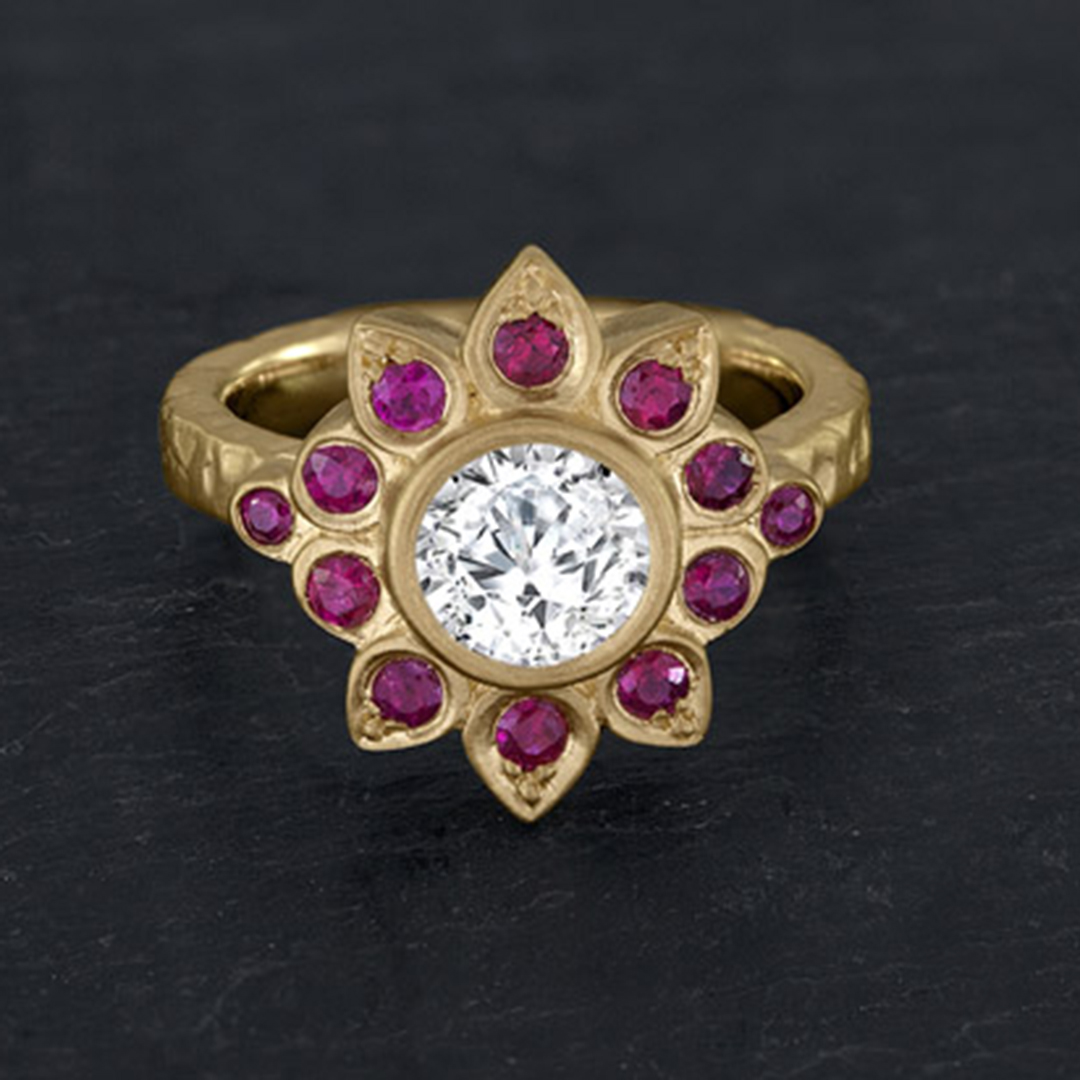
The final option for what to do with inherited jewelry (that you don’t really like might) be a good option if you have a beautiful diamond or stone but a not so beautiful setting. You can resell the parts or stones and refine the gold or platinum in the setting.
The Diamond resale market is booming (especially for larger stones). With the rise of eco-luxury and responsibly sourced diamonds, many consumers are looking for diamonds that have been previously owned as opposed to newly mined.
If you have a GIA certified diamonds or IGI certified diamonds, you’ll have a much better chance of reselling the diamond on the second hand market. (GIA is the top-rated certificate followed by IGI certification).
You can then trade in your gold to a refiner.
Exclusive of large diamonds or rare gemstones, most of the expense in a piece of jewelry is in the design and the labor. When trying to resell parts or entire pieces of heirloom, vintage or inherited jewelry, the value is in the weight of the materials and not the design.
Depending on your situation, you might be best off redesigning your inherited jewelry and creating new family heirlooms that you’ll wear everyday!
Do you now know what to do with inherited jewelry that you don’t really like?
Was that helpful? I sure hope so!
If you have an inherited piece of jewelry that you’re not sure what to do with, I’d love to help you out by redesigning it for you.
Go here and get the process started right now!
